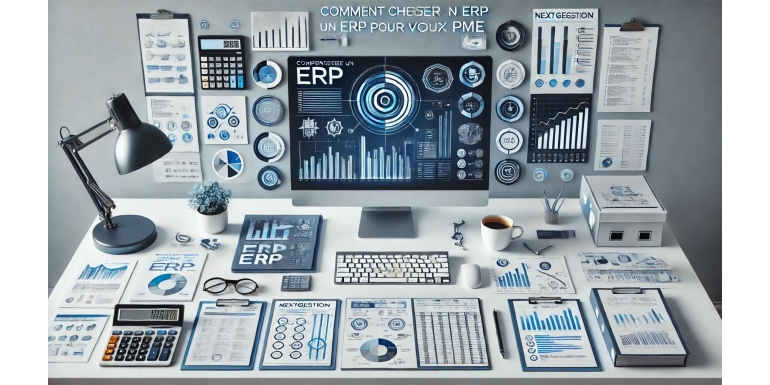
Implementing an Enterprise Resource Planning (ERP) system is a crucial step for any small or medium-sized enterprise (SME) looking to improve operational efficiency. Choosing the right ERP can seem complex, especially given the multitude of options available on the market. This article aims to guide SME leaders in the selection process of an ERP by addressing essential aspects to consider for making the best choice possible.
1. Understand Your SME's Needs
Before diving into the search for an ERP, it is fundamental to fully understand the specific needs of your business. Each SME has its own processes, challenges, and goals.
1.1 Internal Process Analysis
Start by mapping your internal processes. What tasks are time-consuming? What tools are you currently using? This analysis will help determine the specific functionalities your ERP needs to include.
1.2 Defining Objectives
Identify your short-term and long-term goals. Do you want to improve inventory management, automate invoicing, or optimize customer relationships? These objectives will guide your ERP choice.
2. Evaluate Essential ERP Features
ERP functionalities can vary significantly from one provider to another. Here are some key features to consider:
2.1 Financial Management
A good ERP solution should offer comprehensive financial management tools, including accounting, budget management, and financial reporting.
2.2 Human Resource Management
Managing employees, payroll, and performance is also crucial. An effective ERP should facilitate human resource management and performance tracking.
2.3 Supply Chain Management
For companies managing inventory, it is important that the ERP integrates supply chain management functionalities, from ordering to delivery.
2.4 Integrated CRM
A Customer Relationship Management (CRM) module enhances interaction with clients, tracks sales, and manages business opportunities.
3. Choose Between Cloud ERP and On-Premise ERP
Another critical choice involves the type of ERP. Businesses can opt for either a cloud-based solution or an on-premise solution.
3.1 Cloud ERP
Cloud-based ERPs offer greater flexibility and accessibility, allowing users to access their system from anywhere. Moreover, updates and maintenance are typically managed by the provider.
3.2 On-Premise ERP
On-premise ERPs, on the other hand, provide more control over data and may be better suited for certain industries with specific data security requirements. However, they require investments in infrastructure and maintenance.
4. Establish a Budget
The cost of an ERP can vary considerably based on features, company size, and deployment type.
4.1 Acquisition Costs
Initial costs include purchasing the software, configuration, and installation fees. It is essential to request detailed quotes from multiple providers.
4.2 Recurring Costs
Don't forget to account for subscription fees, maintenance, and updates. These costs can accumulate over time.
5. Evaluate ERP Providers
Once you have identified your needs and set a budget, it's time to start evaluating ERP providers.
5.1 Reputation and Experience
Look for providers with a good market reputation and solid experience in your industry. Testimonials from other SMEs can also provide valuable insights.
5.2 Customer Support
Customer support is a critical criterion to consider. A good provider should offer responsive support and training resources to facilitate ERP adoption.
5.3 Customization and Scalability
Ensure that the ERP can be customized to meet your specific needs and that it can scale as your business grows.
6. ERP Implementation Process
The implementation of an ERP is a crucial step that requires careful planning.
6.1 Project Planning
Establish a realistic timeline and define key milestones for the implementation. Involve stakeholders early to ensure a smooth process.
6.2 User Training
Training employees is essential to ensure successful ERP adoption. Prepare training sessions tailored to the varying experience levels of users.
6.3 Monitoring and Evaluation
After implementation, it's important to monitor system performance and evaluate whether it meets the set objectives.
7. Measure Return on Investment (ROI)
Finally, it is essential to measure the return on investment of your ERP.
7.1 Performance Indicators
Define key performance indicators (KPIs) to evaluate the effectiveness of the ERP. This may include metrics such as cost reduction, productivity improvement, and customer satisfaction.
7.2 Necessary Adjustments
Be prepared to make adjustments to your ERP usage based on observed results. This may involve additional training or configuration changes.
Conclusion
Choosing an ERP for your SME is a process that requires deep reflection and careful planning. By understanding your needs, evaluating available features, establishing a budget, and selecting a reputable provider, you can choose a system that significantly enhances your company's efficiency. Implementation and monitoring are also essential to ensure that your ERP achieves its objectives and generates a positive return on investment.
